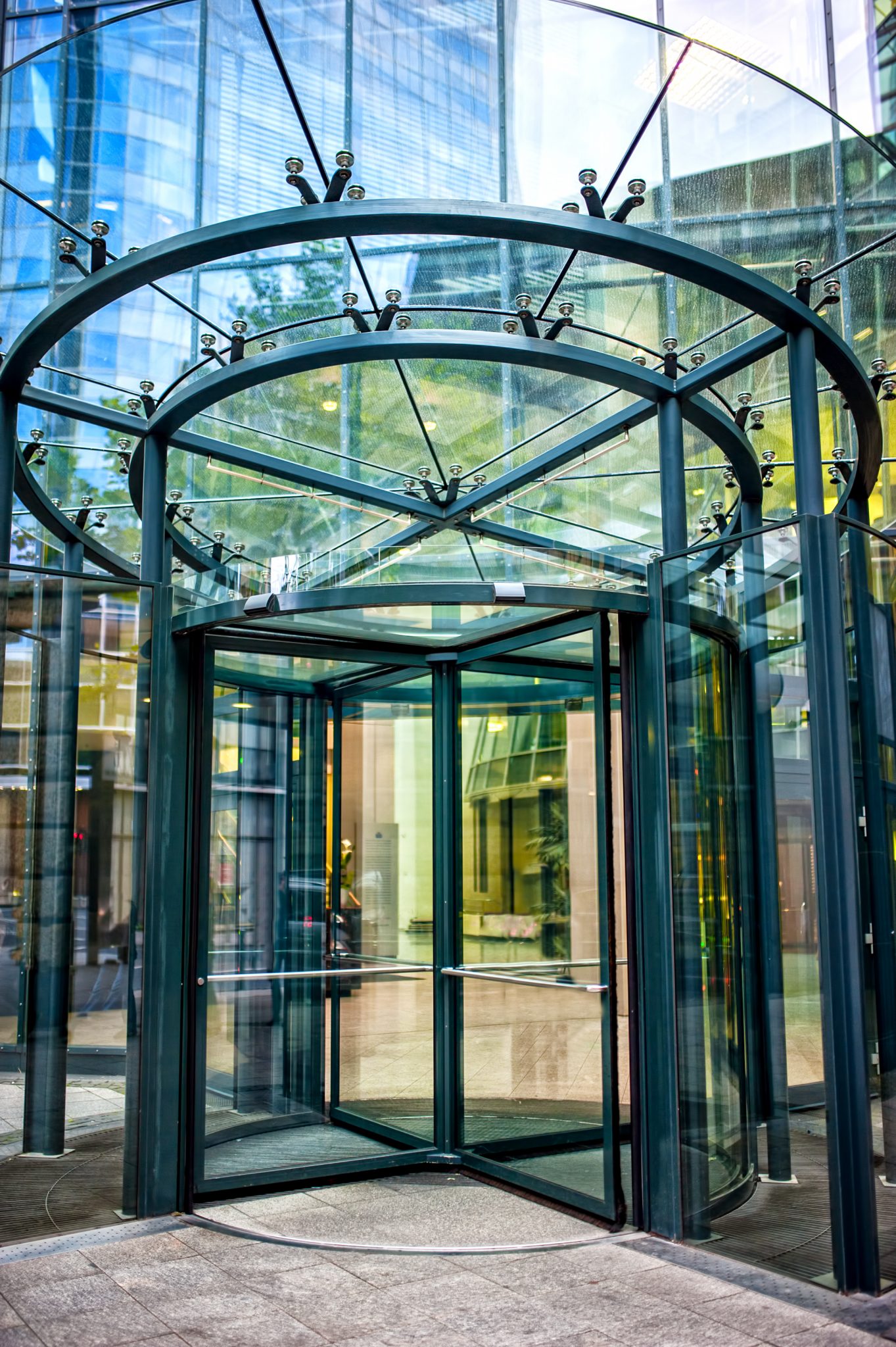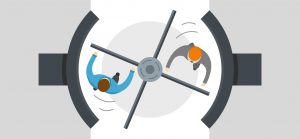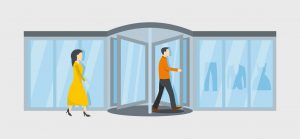
The revolving door is made up of three (or four) doors that are attached to a central shaft. A small motor is used to allow the doors to rotate at a specified speed. Most businesses that employ the use of revolving doors do so because of heavy traffic entering and exiting their facilities.
Revolving doors have been around for quite some time, and their architecture has not changed much since they were first conceptualized. The very first model for revolving doors was patented in 1881 by a German inventor named H. Bockhacker. However, it wasn’t until inventor Theophilus Van Kannel got the U.S. patent for his three-way storm door in 1888 that the idea of revolving doors became more widely accepted.
Kannel’s model contained weather stripping as a way of making the door more energy efficient. He formed his own manufacturing company—Van Kannel Revolving Door Co.—and eventually sold it in 1907 to International Steel (currently named International Revolving Door Co.)
We see a lot of jokes about people getting stuck walking through revolving doors, but these doors are for more than just comedy. They have a significant environmental impact when they are used. For starters, revolving doors reduce the amount of air that circulates in and out the building. Therefore, your business will be able to keep a constant temperature, which is another benefit for the environment.

To put it simply, having revolving doors saves on energy costs, and here’s why. Heating and air systems and the increase in high-rise buildings have increased energy usage. In 2006, MIT conducted a study to determine how much energy is wasted when people go in and out of a building. Their findings indicated that 36-watt hours of energy—the equivalent of a half-hour of using a 60-watt light bulb—was used by a person when they came in and out of the facility.
When that figure was multiplied by all the people who come in and out of the building, the figure was 80,000-watt-hours of energy. Because office facilities use up to 40% of the total consumed energy in the U.S., having resolving doors to cut energy costs will have a profound effect on the environment.
However, few people are actualizing the impact of having revolving doors. According to the MIT research, no more than 30% of people employ the use of revolving doors when given the opportunity. If people were more informed about using revolving doors, then more people would embrace the use of the product and appreciate its many benefits:
- Creates a continuous seal between the air outdoors and indoors, which also translates into more suitable and consistent temperatures.
- Reduces the strain placed on heating and air conditioning systems, which reduces the energy usage and utility bill cost for the facility.
- A reduction in air change occurrences, which keep the entry sealed. `
- A reduction in pollution and noise.


